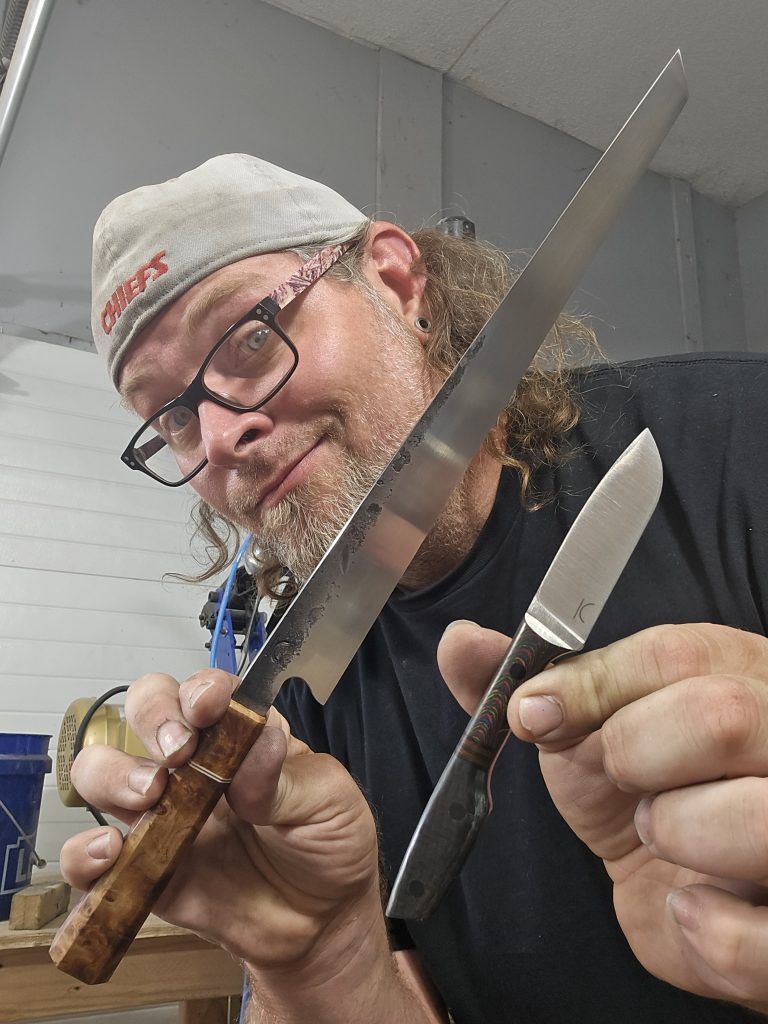
Today’s interview is brought to you by Anthony Stratton from the United States. A relatively new maker, who is never short on ideas. He knows his stuff, but what I appreciate is that he is always willing to take in new information and try something new. I certainly am excited to see how his approach will evolve his knife making. I am very pleased he was not only willing to give of his time, but also to share his experience as a newer maker.
To start off, please tell us a little about yourself.
My name is Anthony Stratton and I’m a Kansas City based knifemaker who also specializes in handle scale designs. I have a background in engineering and management but currently run a lawn care business for my day job.
What sparked your interest in knives?
I was a somewhat lonely and perhaps weird kid. I’ve always been fascinated with weapons so I found myself drawn to BB Guns, bows, slingshots and knives at an early age. There’s something about the potential of danger that calms me. Again, a little weird.
What inspired you to do this and how did you learn?
I worked with a guy about 20 years ago who made knives and I briefly picked it up, but at the time I was in college and working full time and it just kind of slipped away. As I moved through the various phases of adult hobbies, I clicked on a YouTube video from a knife retailer and just went down the rabbit hole and started collecting knives. When I started ordering custom fixed blades I began designing my own handle scales by photoshopping different materials together on a picture of that makers knife. It just got to the point where I was designing so many pictures I realized I’d never be able to afford having that many knives made with them, so I started making handle scales to sell to knifemakers with the thought in the back of my mind if I stuck with it I’d buy a grinder and start making knives.
When did you start making knives?
I got my grinder as a Christmas present for myself a year and a half ago and began making knives shortly after.
What did you make your first knife with?
I made my first knife out of a blank Colibri knives sent me while I was waiting on my first batch of blanks to come back from heat treat. It was a carbon steel culinary knife that I finished with a blue and natural maple burl wa handle with a micarta spacer. The first knife I made of my own design was a high carbon skinning knife with a blue and white micarta handle.
Do you have a favorite knife you made, tell me about it?
I think my favorite knife was one of my small EDC models that I took to Blade Show this year. It’s a hand satin CPM-Cruwear blade with fordite, carbon fiber. and burgundy linen micarta on the handle. Something about it just checks all the boxes. Ironically enough it’s one of the few builds I still have left after the show. I’m trying to decide if I want to take it to my next knife show, drop it on Instagram, or just keep it at this point.
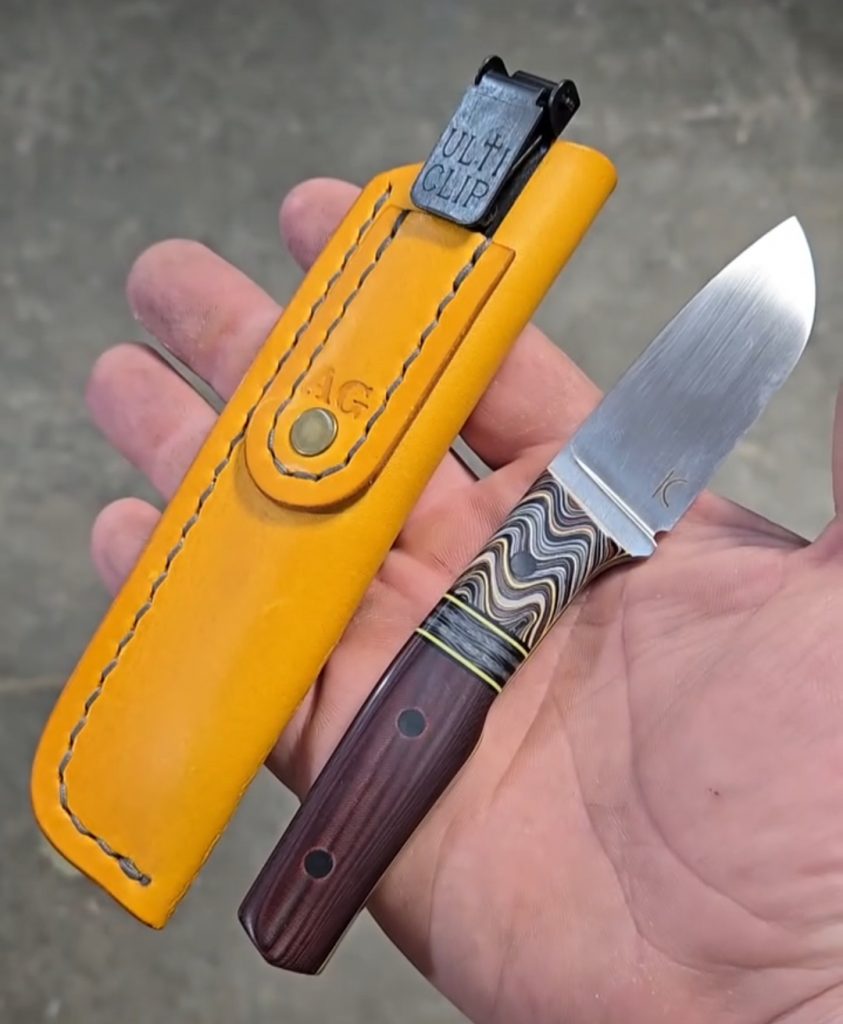
What is the most important aspect of a well-made knife?
If you want a single element that’s needed for a good knife, it’s absolutely edge geometry. That said I believe in the Kitchen Sink method when it comes to making a knife. Everything has to be right for me from the steels I use, the heat treat, the grind, finish, handle ergonomics and as you might have guessed, the handle design.
What keeps you going?
I just have too many ideas I need to get out of my head to slow down any time soon. I like making every build a true original, and I try to make no two designs the same.
Biggest struggle?
My biggest struggle is definitely time management. My lawn business pays the bills, but the knives are my passion and creative outlet. It can be a real challenge getting home from a hard day working out in the sun and finding motivation to go spend a few hours in a hot shop.
What kinds of knives do you make?
I dabble in a little bit of everything, but my primary focus is small pocket carry fixed blades.
How did your background affect your approach to knives?
I have a pretty extensive background in Lean Manufacturing, so I spend a lot of time focusing on how I can make every build better and more efficient. It has helped me, not only increase the output with my limited time, but also has allowed me to increase the quality of my fit and finish in a very short amount of time.
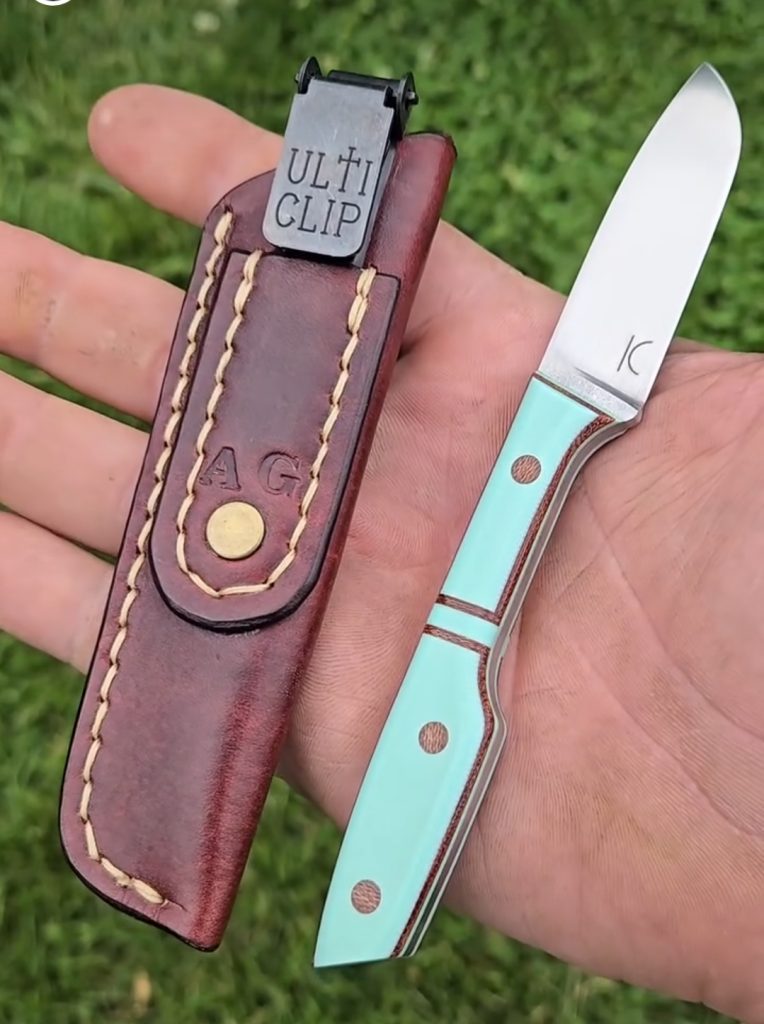
Who helped you early on?
The best part of the knifemaking community is how many people that are willing to drop everything at a moment’s notice and shoot you a video showing you how they do something. Some of the guys who I leaned on the most when I was first getting started were Jordan at Arc and Iron Knives, Eric at New Edge Tool, Michael at Colibri Knives and Greg at Deer Rock Knives. All those guys are amazing makers and people, and I can’t recommend them enough. Go look at them on the ‘gram!
Who are your influences/inspirations?
Jordan at Arc and Iron Knives was definitely my biggest influence as a maker. He played a heavy role in me getting started making both scales and knives.
How do you think that inspiration (those inspirations) translates into your work?
When people comment on how far I’ve made it as a maker I tell them all the same thing. Every time I’m looking at a build and I’m trying to decide if its “good enough” or if I need to keep working, I ask myself if any of those guys who helped and influenced me walked into my shop right now would I be proud to show them this knife. If I feel I’d be worried they notice something not up to par, that means I need to keep working.
What, if any, impact has your background in knife scales had on your approach to knife making?
One thing I try to keep in mind when I design a knife is how the handle can showcase the scales. I feel like making every knife with a one-off set of segmented scales, almost HAS to be my thing, since that is how I started. So, one thing many people might notice on my EDC’s is how they are handle heavy proportionally, which allows me to get as much design on the knife as possible.
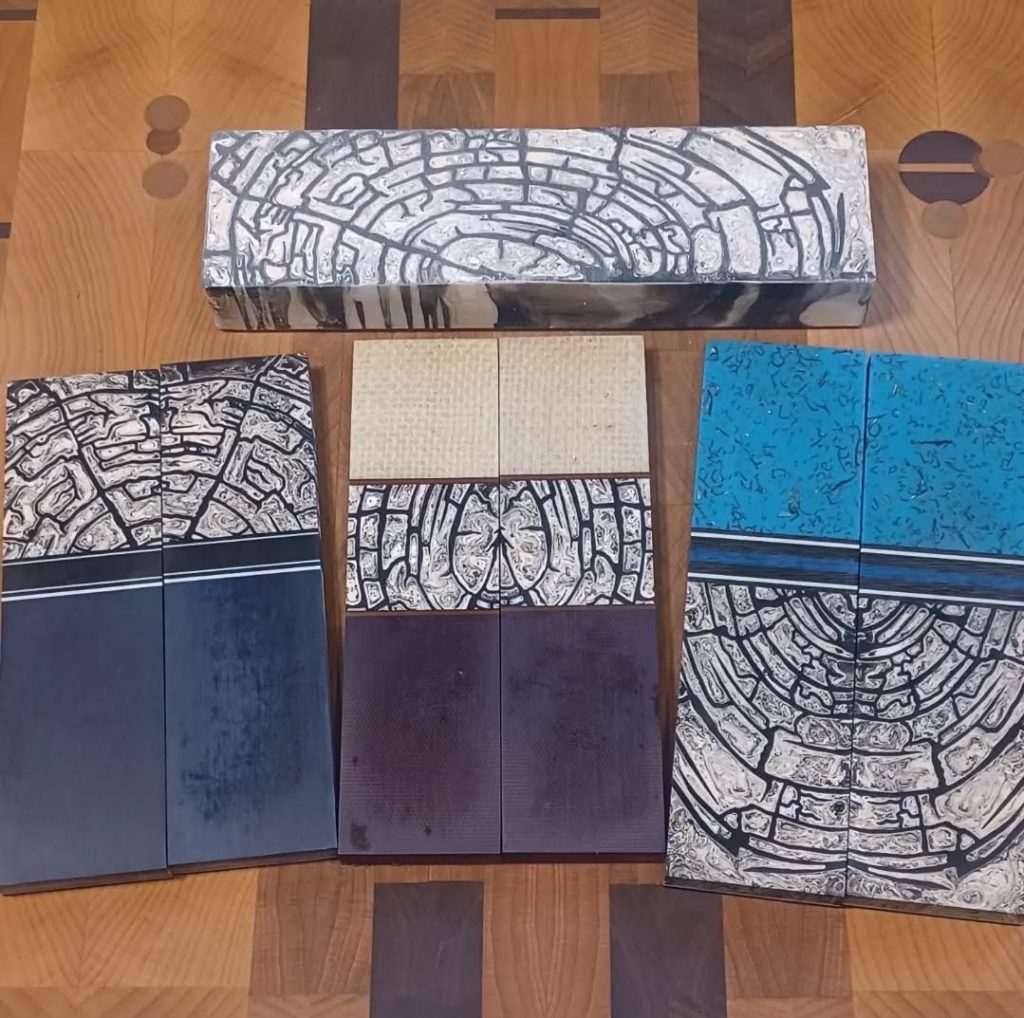
Any specific breakthroughs or revelations in your knife making journey?
You have to be motivated by the love of making knives. If you’re making knives to make money, you’re going to constantly be miserable.
What is the perfect knife?
It’s the knife that you are both proud to show off and also use. That can be a delicate balance for many.
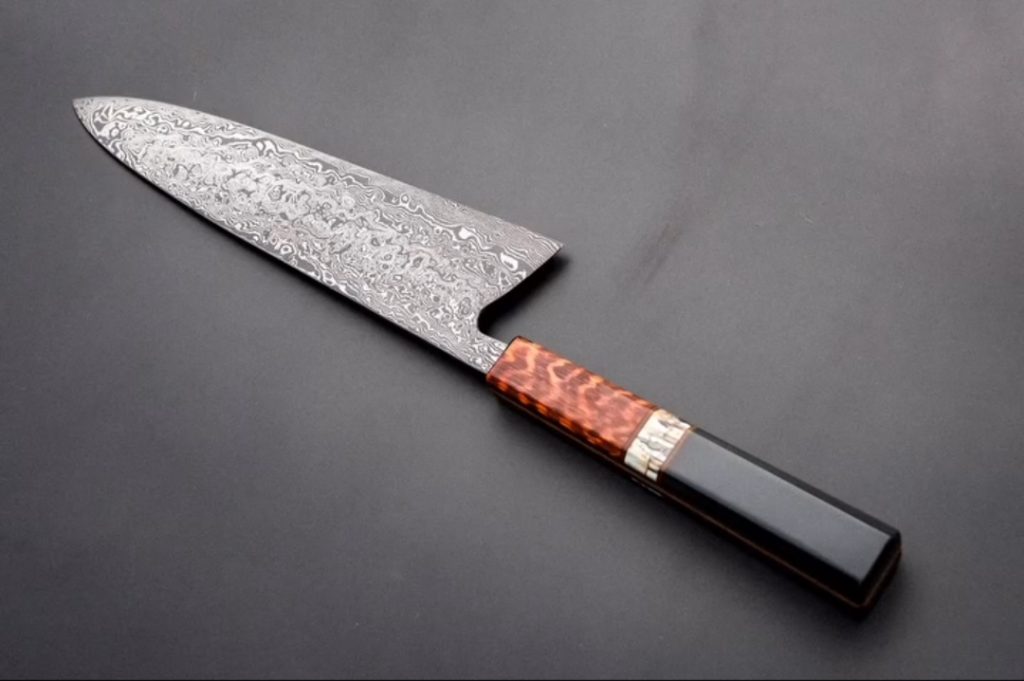
How do you approach a new concept and that concept’s implementation?
You just got to jump in and get after it. Arm yourself with as much information as possible and then just try it. There’s not a knifemaker on this planet who hasn’t thrown away a blade.
How do you approach knife testing?
With small EDC knives there isn’t a lot of testing to be done. All my blades are checked for hardness after heat treat, and I make sure they will cut. I’ve only managed to keep one knife I’ve made but that one has been through it as my work carry. Cutting wire, batoning through firewood, delimbing branches, it has done it all and held up.
How do you develop a design, select a steel, and fine-tune a heat treatment?
For designs I usually just sketch out something weird and immediately fall in love with it. I’m almost ashamed how little effort I put into my designs. Most of them just kind of happened. My primary steels are Cruwear and Magnacut. I find steels with high toughness and high wear resistance will hold an edge in real world scenarios far better than the ultra-high wear resistance steels. I send my blades out for heat treat to one of my fellow knifemakers. He does small batch cryogenic heat treat, and with all the information out there by Knife Steel Nerds it has never been easier to dial in a solid heat treat. I spec all my heat treat out for maximum performance.
What is your favorite steel and what do you like about it?
CPM-Cruwear has long been my favorite steel, long before I even started making knives. What makes it unique is how little the toughness drops off with increased hardness. So, you can max out the hardness and still have an incredibly tough knife. While not being considered a stainless steel, it’s very close to being considered one. So, if neglected it will stain and rust, but with all my Cruwear knives I simply dry the blades off after use and have never had an issue with staining or patina despite not oiling them.
How has the knife world changed since you started?
I really haven’t been doing this very long, but one thing that sticks out is the sheer number of people getting into either making knives or designing knives.
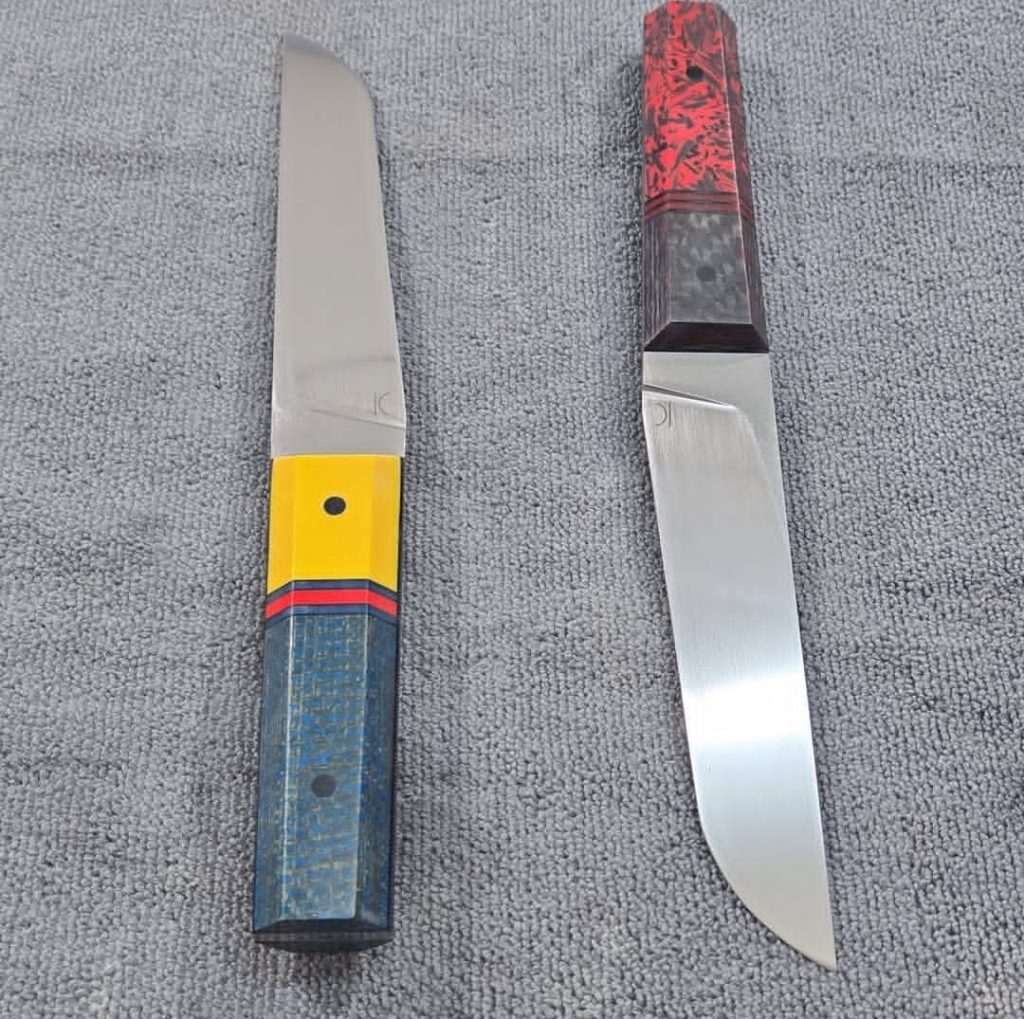
What’s up next for you? Any exciting new projects to tell us about?
I am in the process of getting set up to forge knives. I’ve pretty much gathered up all the necessary tools, just need to get everything in place. I plan to hand forge mostly culinary blades to complement what has been up to now a primary focus on the EDC side. Just like everything else, I have a lot of ideas bouncing around in my head I need to get out and I’m looking forward to doing some billet work making patterned damascus and various sanmai kitchen knives.
To see more of Anthony’s work, head over to and give him a follow. http://www.instagram/underthebridgetoolandscale
Leave a Reply